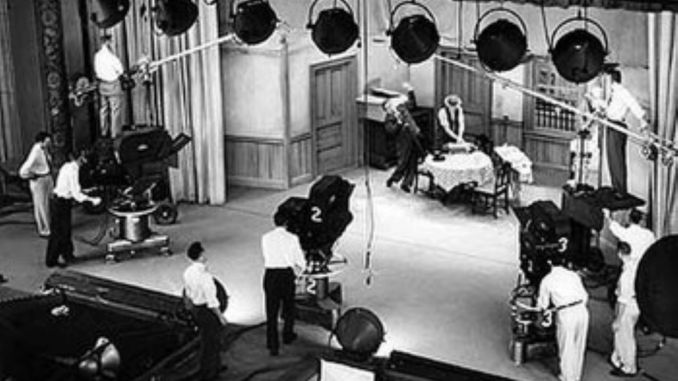
When The Honeymooners premiered in the mid-1950s, audiences tuned in for Jackie Gleason’s larger-than-life humor, the sharp wit of Audrey Meadows, and the timeless banter between Ralph Kramden and Ed Norton. But behind the laughter, the show was also breaking ground in a way few viewers realized at the time. It was filmed using a short-lived but innovative hybrid technology known as Electronicam, a system that blended the immediacy of live television with the permanence of film.
Electronicam was developed by DuMont Laboratories in the early 1950s, during a transitional moment for television. Most TV shows were broadcast live and preserved only through kinescope, a clunky process that involved filming a television screen and resulted in grainy, low-quality images. Electronicam, by contrast, merged a film camera with a television camera inside the same housing. This allowed producers to broadcast live while simultaneously recording pristine 35mm film versions of each episode. In theory, it was the best of both worlds.
Jackie Gleason, always eager to innovate, saw Electronicam’s potential immediately. He recognized that live television was fleeting—once an episode aired, it was gone, with only poor kinescopes left behind. By using Electronicam for The Honeymooners, he ensured that his show would survive in high quality for future generations. This decision proved pivotal. Without Electronicam, the “Classic 39” episodes of The Honeymooners might not exist today in such sharp detail.
For the cast and crew, however, the technology came with challenges. Because the system combined film and video, performers had to be careful with blocking and timing. Mistakes couldn’t be edited out the way they can with modern multi-camera filming. Gleason insisted on minimal rehearsals to preserve spontaneity, which meant actors were often performing under pressure with the knowledge that their flubs would live forever on film. Yet this tension arguably added to the show’s unique energy—the sense of a live performance preserved in amber.
The significance of Electronicam extended beyond The Honeymooners. It demonstrated that television could create programming with both immediate impact and long-term archival value. While the system itself was eventually abandoned—too bulky and expensive compared to emerging videotape technology—it paved the way for later innovations. By proving that TV shows could be preserved in high fidelity, Electronicam influenced the industry’s thinking about syndication, reruns, and the enduring commercial life of television content.
Today, when audiences watch Ralph Kramden threaten to send Alice “to the moon” or laugh at Norton’s antics, they are seeing performances that look remarkably fresh for material nearly seventy years old. That clarity exists because Gleason took a gamble on an experimental technology most of his peers ignored. In hindsight, Electronicam wasn’t just a technical curiosity—it was a revolution that safeguarded one of television’s greatest comedies.
In many ways, the story of Electronicam mirrors The Honeymooners itself: ambitious, a little rough around the edges, but unforgettable in its impact. And thanks to that gamble, Jackie Gleason’s “Classic 39” remains more than just a memory—it’s a living, breathing part of television history.
